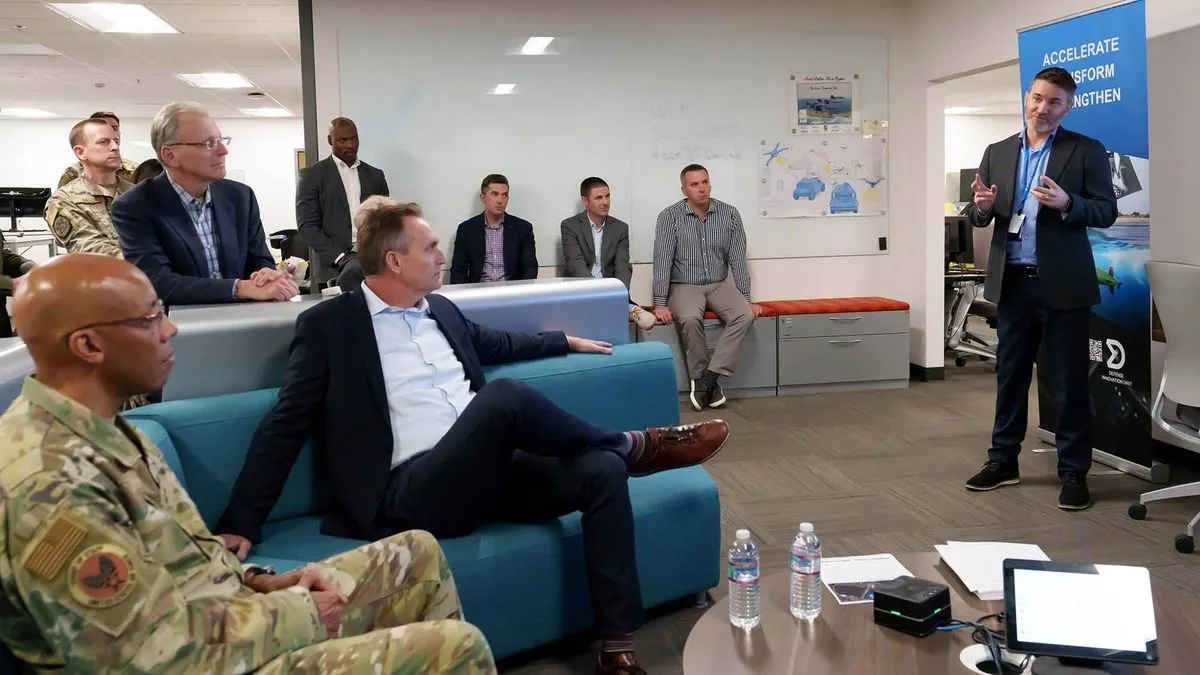Pentagon's Tech Revolution: Bridging the Silicon Valley-Military Divide
The Defense Innovation Unit's efforts to modernize military technology face bureaucratic hurdles and cultural clashes. Despite challenges, commercial tech is reshaping warfare, but its transformative impact remains debated.

In a striking contrast to its high-tech reputation, the U.S. military's air operations command in the Middle East relied on whiteboards and magnetic pucks for scheduling as recently as 2016. This outdated approach caught the attention of Eric Schmidt, former Google CEO, during a visit to a desert airbase near Doha. His observation sparked a chain of events that would lead to significant changes in how the Pentagon approaches technology integration.
The Defense Innovation Unit (DIU), established in 2015 by then-Defense Secretary Ash Carter, aimed to bridge the growing gap between Silicon Valley's rapid innovations and the military's slower adoption of new technologies. This initiative marked a shift from the historical symbiosis between the tech industry and the defense sector, which had waned since the end of the Cold War.

Raj M. Shah and Christopher Kirchhoff, who led the DIU, recount their experiences in "Unit X: How the Pentagon and Silicon Valley Are Transforming the Future of War." Their book highlights the challenges and successes of integrating commercial technologies into military operations.
The authors detail the bureaucratic hurdles faced by the DIU, including attempts to defund the unit and resistance from established defense contractors. Despite these obstacles, the DIU made progress by leveraging legal authorities like the Other Transactions Authority (OTA) to streamline procurement processes.
"The tech bros aren't helping us too much in Ukraine. It's hardcore production of really serious weaponry that matters. We're not fighting Ukraine with Silicon Valley right now, even though they're going to try to take credit for it."
The impact of commercial technology on modern warfare is evident in Ukraine's conflict with Russia. Ukrainian forces have utilized Starlink internet terminals, autonomous drones, and space-based surveillance systems. However, the transformative nature of these technologies in warfare remains debated among experts.
While the DIU has achieved notable successes, its overall impact on the Pentagon's acquisition process has been limited. Venture-backed companies still win less than 1% of all Pentagon contracts, with traditional defense contractors maintaining their dominance.
Nevertheless, the DIU has succeeded in demonstrating the viability of commercial technology in military applications and bridging cultural gaps between Silicon Valley and the defense sector. This shift is reflected in the increasing venture capital investment in defense technology startups and the growing involvement of tech industry figures in national security discussions.
As Silicon Valley reengages with the defense sector, the landscape of military technology continues to evolve, echoing the industry's roots in the 1950s while adapting to the challenges of 21st-century warfare.


































